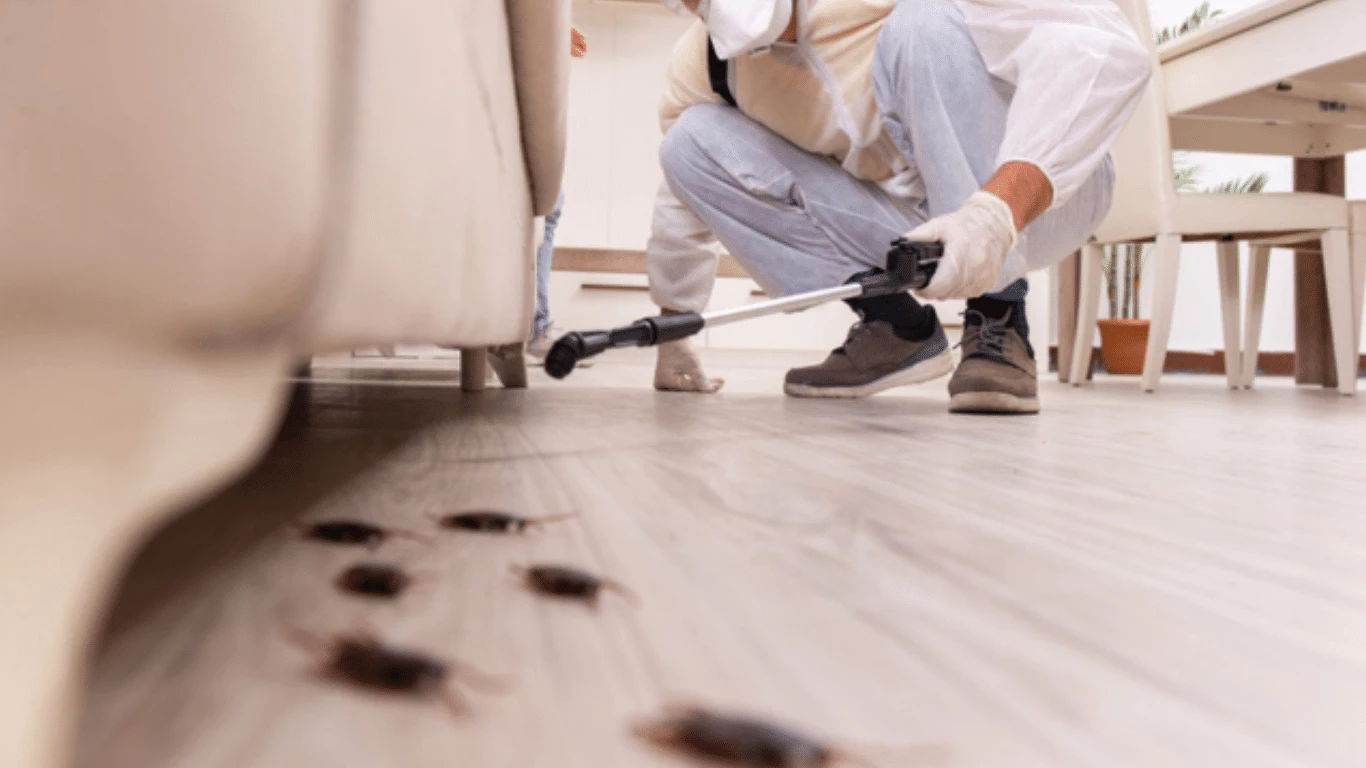The resurgence of bed bugs in urban environments has highlighted their adaptability and resilience in modern spaces. These tiny pests are known for their ability to hide, reproduce quickly, and resist many conventional pest control methods. As bed bug infestations become more common in densely populated areas, understanding their behavior and adaptive patterns is crucial for effective prevention and control.
How Do Bed Bugs Adapt To Different Environments In Modern Spaces?
Bed bugs have developed unique adaptations that allow them to thrive in various modern environments. Unlike many other pests, bed bugs do not rely on food scraps or decaying matter; instead, they feed exclusively on blood. This narrow feeding habit has forced them to develop sophisticated survival mechanisms to remain close to their human hosts.
- Adaptable Hiding Spots: Bed bugs can hide in cracks, crevices, and tiny spaces near their hosts. Modern furnishings, like couches, mattresses, and bed frames, provide ample hiding spaces that help bed bugs stay undetected. They are particularly adept at using upholstered furniture, baseboards, and even electrical outlets as shelter, making it difficult for residents to identify infestations.
- Nocturnal Behavior: Bed bugs typically feed at night, allowing them to remain undisturbed during the day. Their nocturnal nature helps them avoid detection, especially in households where they can hide until the next feeding period.
- Resistance to Chemicals: In response to pest control efforts, bed bugs have developed resistance to many commonly used insecticides. This resistance has made traditional chemical treatments less effective, requiring more specialized approaches to eradicate infestations.
- Thermotolerance: Bed bugs can survive in a range of temperatures, from nearly freezing to very warm. While they are sensitive to extreme heat and cold, they have adapted to withstand the typical temperature fluctuations found in homes, offices, and public spaces.
These adaptations make bed bugs incredibly resilient in urban environments, allowing them to thrive in modern spaces where people live, work, and travel.
What Are Common Signs of A Bed Bug Infestation In Urban Settings?
Detecting bed bugs early can be challenging, as they are skilled at hiding and often go unnoticed until the infestation becomes severe. Here are some common signs of a bed bug infestation in urban areas:
- Bite Marks: One of the first signs of a bed bug infestation is the presence of small, red bite marks on the skin, often in clusters or lines. Bed bug bites are generally itchy and may appear in exposed areas such as the arms, neck, and legs.
- Bloodstains on Bedding: After feeding, bed bugs may leave small bloodstains on sheets or pillowcases. These stains are usually red or rust-colored and can be found near the edges of the bed or mattress.
- Dark Spots or Droppings: Bed bugs leave behind dark, tiny droppings that resemble small ink dots. These spots are often found along the seams of mattresses, in bed frames, or in other hiding areas.
- Shed Skins: Bed bugs shed their skin several times during their life cycle. Finding shed skins in areas such as mattress seams, headboards, or baseboards can be an indication of an infestation.
- Musty Odor: In large infestations, bed bugs emit a musty odor that some people describe as similar to the smell of mold or rotten fruit. This odor is caused by the pheromones that bed bugs release when they gather in large numbers.
Urban dwellers should be vigilant in checking for these signs, especially after traveling or moving into a new residence, as bed bugs are commonly spread through human activity.
How Do Bed Bugs Spread In Densely Populated Areas?
Bed bugs have a unique ability to spread quickly in densely populated urban settings, making infestations more difficult to contain. Here’s how bed bugs navigate through bustling city environments:
- Public Transportation: Bed bugs are often transported on clothing, bags, and other belongings, making them highly mobile in cities with extensive public transit systems. Buses, trains, and taxis provide opportunities for bed bugs to hitch a ride on unsuspecting passengers.
- Hotels and Shared Accommodations: Hotels, hostels, and Airbnb rentals are common hotspots for bed bug infestations. These accommodations often have high turnover rates, which increases the likelihood of bed bugs being brought in by travelers. Once present, bed bugs can quickly spread to other rooms and floors.
- Multi-Unit Housing: In apartment buildings and other multi-unit dwellings, bed bugs can move between units through walls, electrical wiring, and plumbing systems. This interconnectivity makes it challenging to contain an infestation, as bed bugs can easily spread from one unit to another.
- Workplaces and Public Spaces: Bed bugs have also been reported in offices, schools, theaters, and other public venues. They can hide in furniture, carpets, and even office equipment, making it possible for them to move from person to person in high-traffic areas.
Because bed bugs can spread through such a wide range of environments, it’s essential for urban residents to be proactive in preventing and detecting infestations, especially after traveling or visiting public spaces.
Why Are Bed Bug Infestations Challenging To Control In Modern Homes?
Controlling bed bug infestations in modern homes is notoriously difficult due to their adaptability and the specific challenges of urban living. Here are some reasons why bed bugs are so difficult to eradicate in today’s households:
- Chemical Resistance: Bed bugs have developed resistance to many insecticides, including those that were once highly effective. This resistance requires pest control professionals to use a combination of treatments, such as heat, cold, and chemical options, to eliminate them.
- Hidden Habitats: Bed bugs are experts at finding secluded spots to hide. In modern homes, they can embed themselves in couches, wall cracks, electrical outlets, and even behind wallpaper. These hidden habitats allow bed bugs to avoid detection and treatment, prolonging infestations.
- Rapid Reproduction: Bed bugs can reproduce quickly, with females laying hundreds of eggs during their lifespan. In favorable conditions, bed bug populations can double within weeks, making it difficult to eradicate an infestation without thorough and repeated treatment.
- Risk of Reinfestation: Even after a successful treatment, reinfestation is a constant risk. Bed bugs are easily reintroduced through clothing, luggage, or second-hand furniture, and they can quickly repopulate an area. Homeowners must take preventive measures to minimize the chances of bed bugs returning.
- Sensitivity to Control Methods: Bed bugs are particularly sensitive to temperature extremes, which is why heat treatments are commonly used for severe infestations. However, these treatments are expensive and may not reach every hiding spot, leading to pockets of survival that allow the infestation to continue.
Given these challenges, it’s essential for homeowners to work with experienced pest control professionals who can tailor a treatment plan that addresses the specific needs of the infestation. Multiple treatment methods, including chemical and non-chemical options, may be necessary to fully eradicate bed bugs in a modern home setting.
Bed bugs have adapted remarkably well to the urban environment, using their stealthy behavior and resilience to survive in modern spaces. Their ability to hide, reproduce quickly, and resist conventional treatments makes them a formidable pest to control, especially in densely populated areas. Recognizing the signs of infestation and understanding how bed bugs spread are essential steps in preventing their intrusion into homes and public spaces.
For urban residents, the best approach to bed bug control is proactive prevention and prompt treatment when signs of an infestation appear. Bed bug infestations require a comprehensive, multi-faceted approach, often combining chemical, heat, and preventive measures to ensure complete eradication. As bed bugs continue to adapt to modern living environments, staying informed and vigilant is key to keeping these unwelcome guests at bay.
Why Trust Pete’s Pest Patrol for Bed Bug Control?
At Pete’s Pest Patrol, we understand that bed bug infestations can be particularly distressing and challenging to manage. Our pest control team specializes in thorough and effective bed bug treatments, using the latest techniques to target and eliminate these resilient pests from your home. Here’s how our services can benefit you:
- Comprehensive Inspections: Our experts conduct detailed inspections to locate bed bugs in all their hiding spots, from furniture and mattresses to baseboards and crevices. We ensure no corner is left unchecked, so you can rest assured the infestation is thoroughly addressed.
- Customized Treatment Plans: We tailor our treatment plans to meet the unique needs of your home, using a combination of chemical treatments, heat applications, and preventive measures to eliminate bed bugs effectively.
- Safe, Reliable Solutions: Your family’s safety is our priority. We use pest control solutions that are safe, eco-friendly, and effective, ensuring that your home remains a secure environment.
With Pete’s Pest Patrol, you’ll receive expert guidance, professional support, and peace of mind as we work to restore your home’s comfort. Don’t let bed bugs disrupt your life—contact us today to schedule a consultation and let our team help you take back control.
Take the First Step Toward a Bed Bug-Free Home with Pete’s Pest Patrol
Don’t let bed bugs take over your space and peace of mind. Schedule a comprehensive inspection with Pete’s Pest Patrol today and let our experts design a personalized plan to eliminate bed bugs from your home. Reach out now and reclaim your comfort and security—because a bed bug-free home is just a call away!

